Headline laptimes from any kind of motorsport testing are famously deceptive – and while, also in MotoGP’s case, they’re not necessarily to be discarded, they form only part of the picture. And in a series where single-lap pace is still not the end-all and be-all, it’s the long runs that theoretically hold more predictive power.
The final pre-season MotoGP test in Portimao didn’t really deviate from the general scheme in most garages – which meant short runs in abundance to test out various set-up settings, new bike bits and aero items.
But much of the grid did attempt some semblance of representative, uninterrupted running, encouraged to do so not only by the fact that the season opener will take place at the same venue in two weeks’ time but that there’s a whole new format to get used to in the half-distance Saturday sprint.
The Portimao sprint on March 25 will be 12 laps, and there was many a run of around that distance. Most of them came on the second day of the two-day test, and the runs on Sunday were generally much quicker than on Saturday – presumably due to both increased grip from the surface and teams/riders being further along in their programmes.
The usual caveat applies – all the long run data we have is from various parts of the two days (and therefore various track conditions), with tyre selection and tyre age at the start often an unknown and the rider’s strategy often a question mark. Some runs began with what looked like a lap or two in ‘qualifying sim’ mode before settling into a more constant pace, while others kept to a more consistent laptime target throughout.
But we’re not devoid of info. And, for all the testing smoke and mirrors, every long run reveals a set of laptimes that a rider can do. Not necessarily their best, but a possible baseline.
You’ll find a full list of runs below, let’s first go over the most interesting performers one by one, fastest to slowest, and summarise what we’ve been able to discern about each individual rider.
Runs were selected on the basis of having at least seven representative laptimes – more than half of a sprint distance – between pit in and pit out. Only those by full-time riders were counted – for example, Ducati tester Michele Pirro did a sequence in the 1m42s range on Saturday, but that tells an outside observer absolutely nothing of value considering he isn’t preparing for a GP weekend and is obviously capable of going faster.
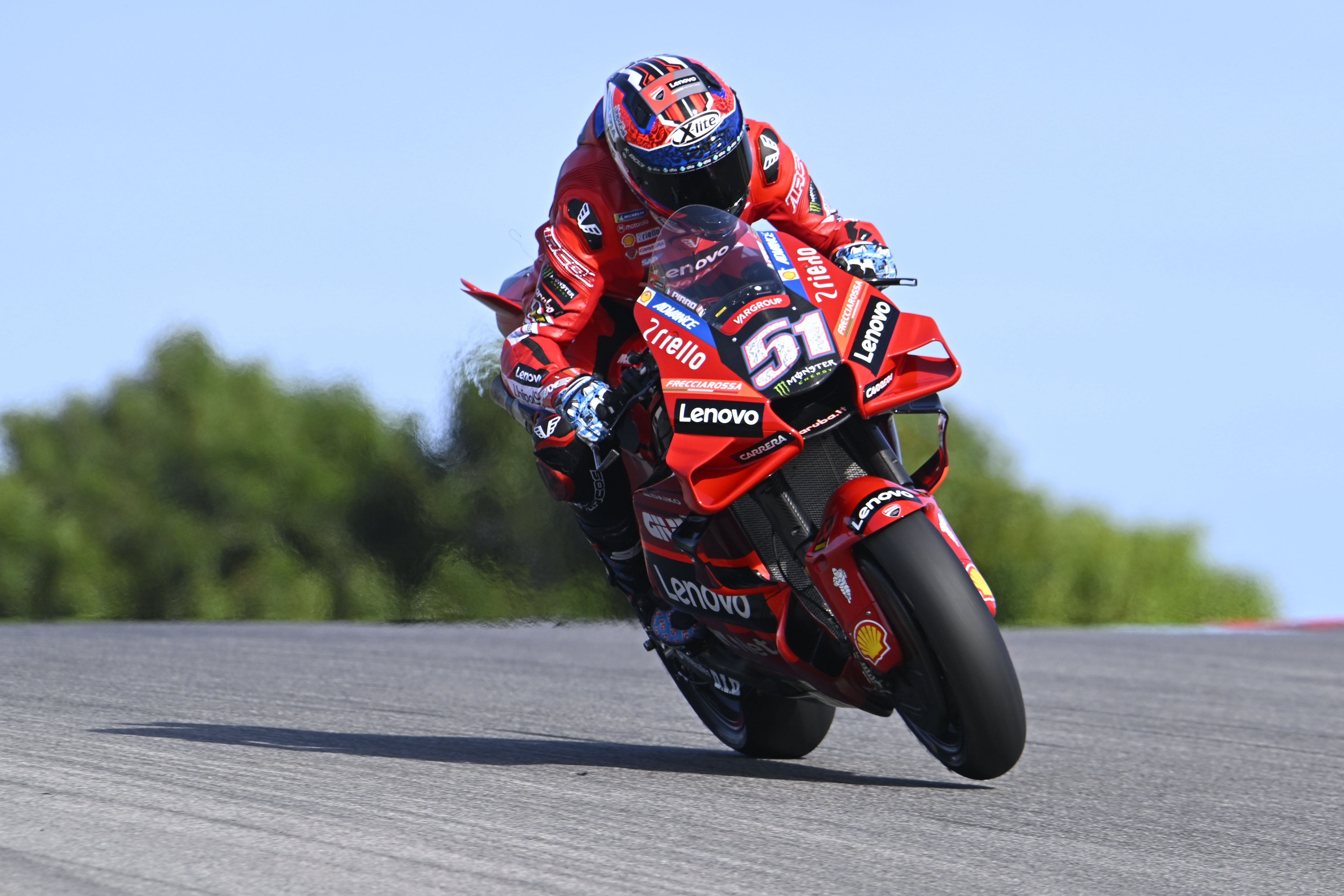
The average laptime is exactly what it suggests. a mean calculated out of all the appropriate laps. Some of them were excised for the calculation – as a rule, I’ve removed every laptime that was a second off the previous or next lap or multiple seconds off the best in the run, because that’s not normal pace variation. A couple of laps with particularly dubious sectors were also taken out.
The lap count is only those laps that counted towards the average.
The standard deviation is that exact statistical measure (the square root of the variance) to show how consistent the pace was. The most uniform runs clocked in at 0.1, the least at 0.5. So the lower the number the more consistent the run.
The correlation coefficient is used as a shortcut – rather than the genuinely scientific metric that it usually is – to show how the run evolved with more laps. It can, by design, range from -1 (run got faster with more laps) to +1 (run got slower with more laps).
Pecco Bagnaia (Ducati)
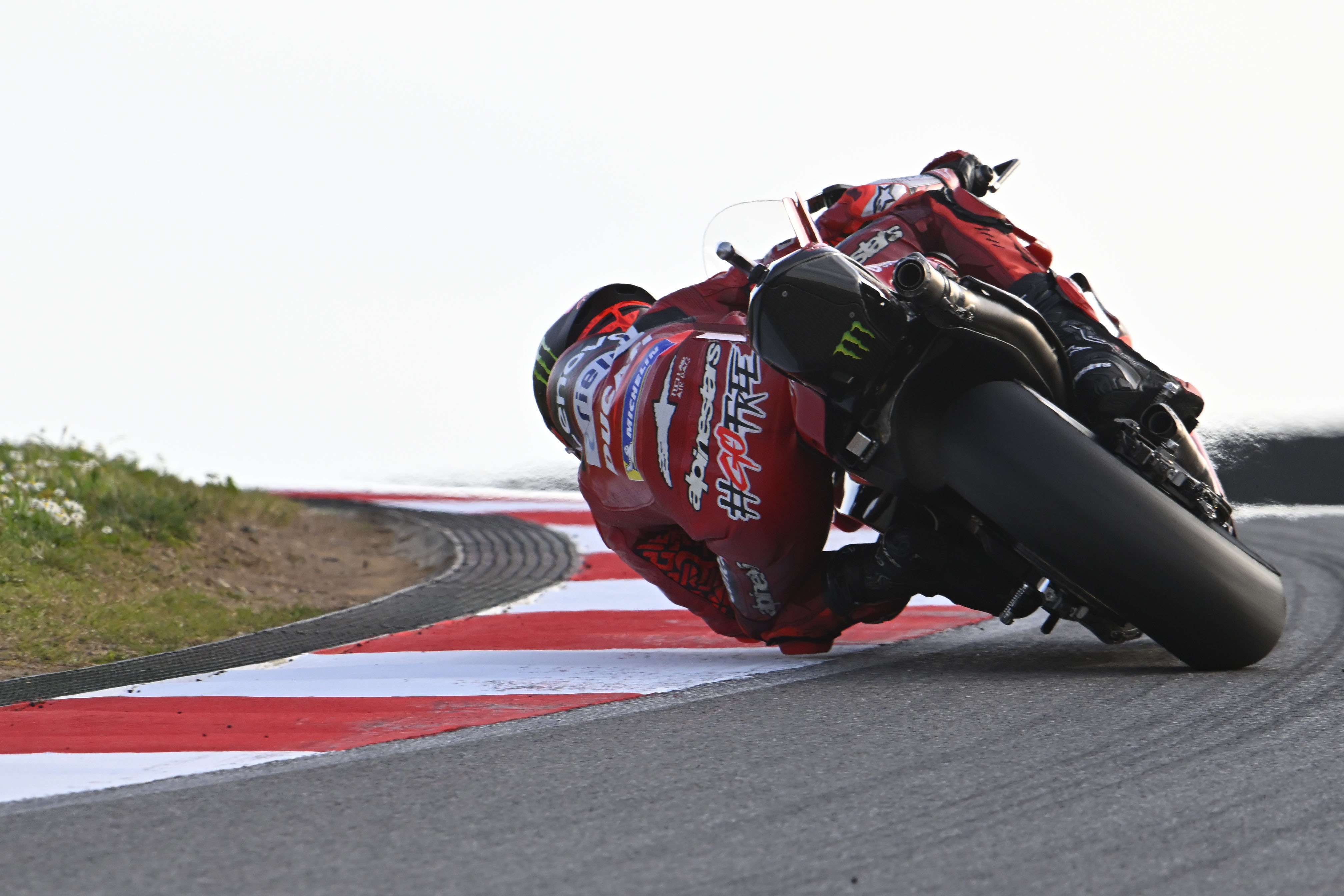
Run 1 (Sunday)
Average: 1m38.994s
Correlation: +0.9
Standard deviation: 0.4
Lap count: 11
Run 2 (Sunday)
Average: 1m39.440s
Correlation: -0.6
Standard deviation: 0.2
Lap count: 10
The widely-recognised 2023 title favourite has his record-shattering lap backed up by a pair of solid long runs. “We tested the sprint race with both [rear] tyres, and my feeling was quite good with both,” he explained.
Logic dictates his initial run was with the soft rear, getting down to a spectacular 1m38.154s on lap three followed what may have been a designed cooldown lap and then eight more laps at pace, albeit with laptime drop-off.
The second run is therefore on the medium rear, with laptime gain instead of drop-off, and probably represents the first part of the Sunday race (albeit with an uncertain fuel level). The soft rear is likely to be the preference for the sprint, but the medium was used by all but two riders in last year’s grand prix.
Jorge Martin (Pramac Ducati)
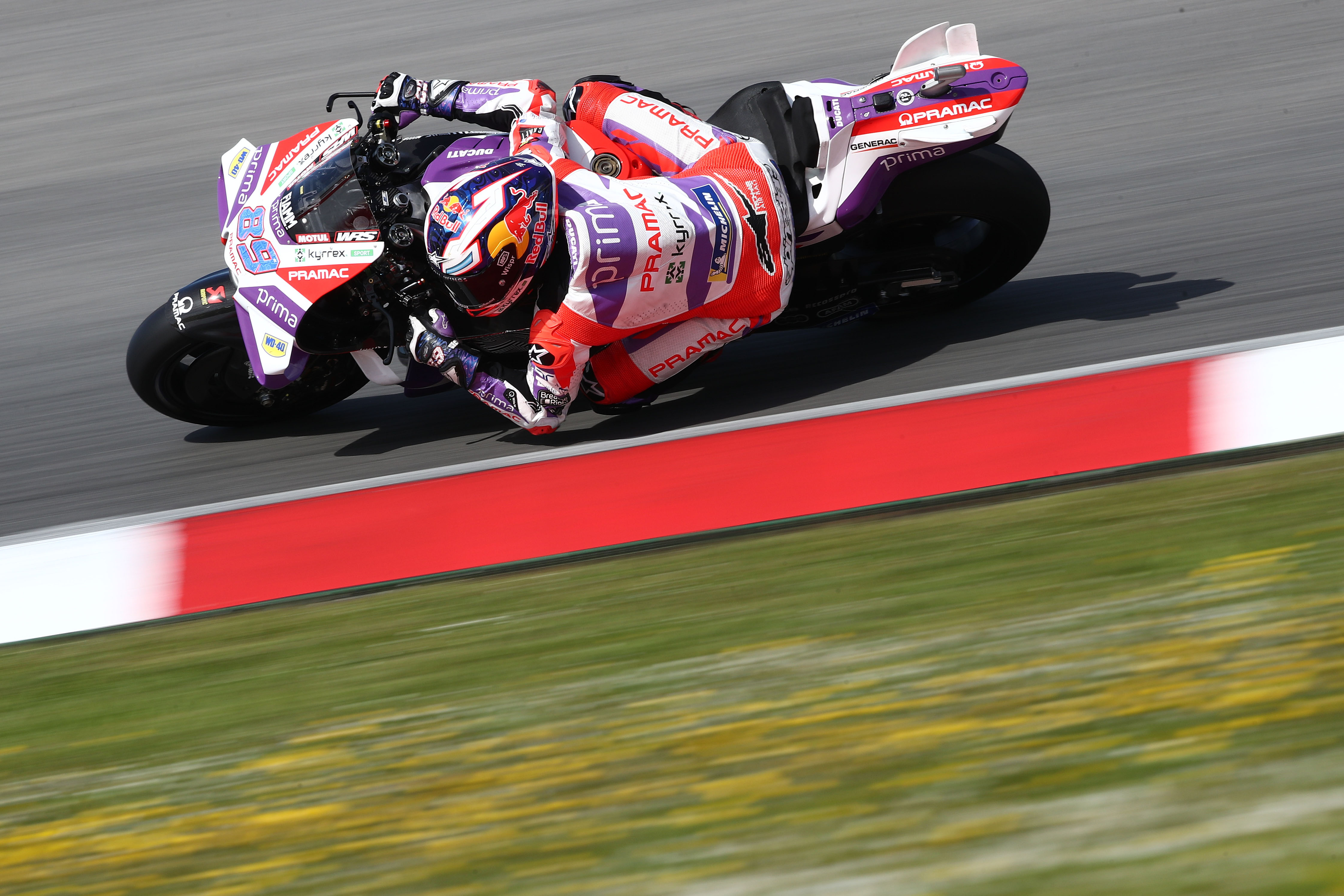
Run 1 (Sunday)
Average: 1m39.094s
Correlation: +0.7
Standard deviation: 0.2
Lap count: 11
“I did a sprint simulation and I was quite confident, I felt super strong,” was Martin’s assessment. “We didn’t make a time attack because I thought it wasn’t necessary to take the risk.”
Don’t be fooled by Martin finishing eighth-fastest in Portimao. His sprint simulation is a lot more in line with the rest of his quietly superb pre-season, especially if you remove one of the 12 laps due to what is a clear outlier time loss in one of the sectors.
Team-mate Johann Zarco did something only vaguely resembling a long run, which looked fine and which he only described as “interesting” – but his general rhetoric suggests he should be a bit closer to Martin.
Fabio Quartararo (Yamaha)
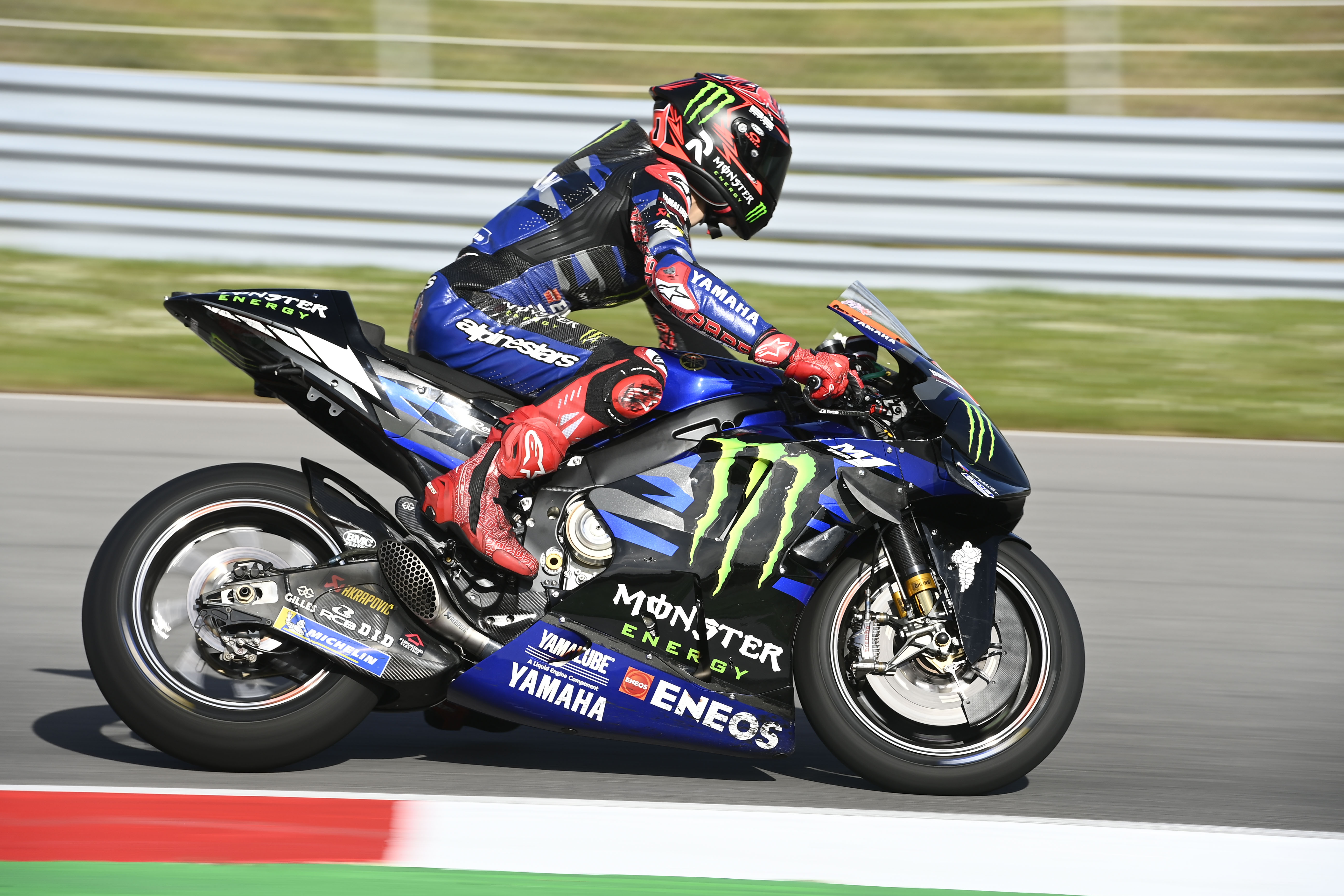
Run 1 (Sunday)
Average: 1m39.126s
Correlation: -0.2
Standard deviation: 0.2
Lap count: 11
Same as with Martin, there was a laptime that needed removing for Quartararo – and without it, it paints a really good picture for the runaway winner of the 2022 race. “Sincerely, Quartararo was quite fast – they have done a really good step in front compared to the best days, Quartararo will be so competitive for sure,” was Bagnaia’s summary after having looked at this run.
“It was not bad,” Quartararo himself concurred, before going on to explain that -0.2 correlation.
“The pace was quite good. The first lap I was a little bit to conservative, and basically, I could’ve pushed a little bit more – my last lap was 38.8 with 12 laps on the tyre. Was not bad.”
If Yamaha’s improved top speed means Quartararo can pass this year, that 1m38.8s lap bodes quite well for Sunday in particular.
Alex Marquez (Gresini Ducati)
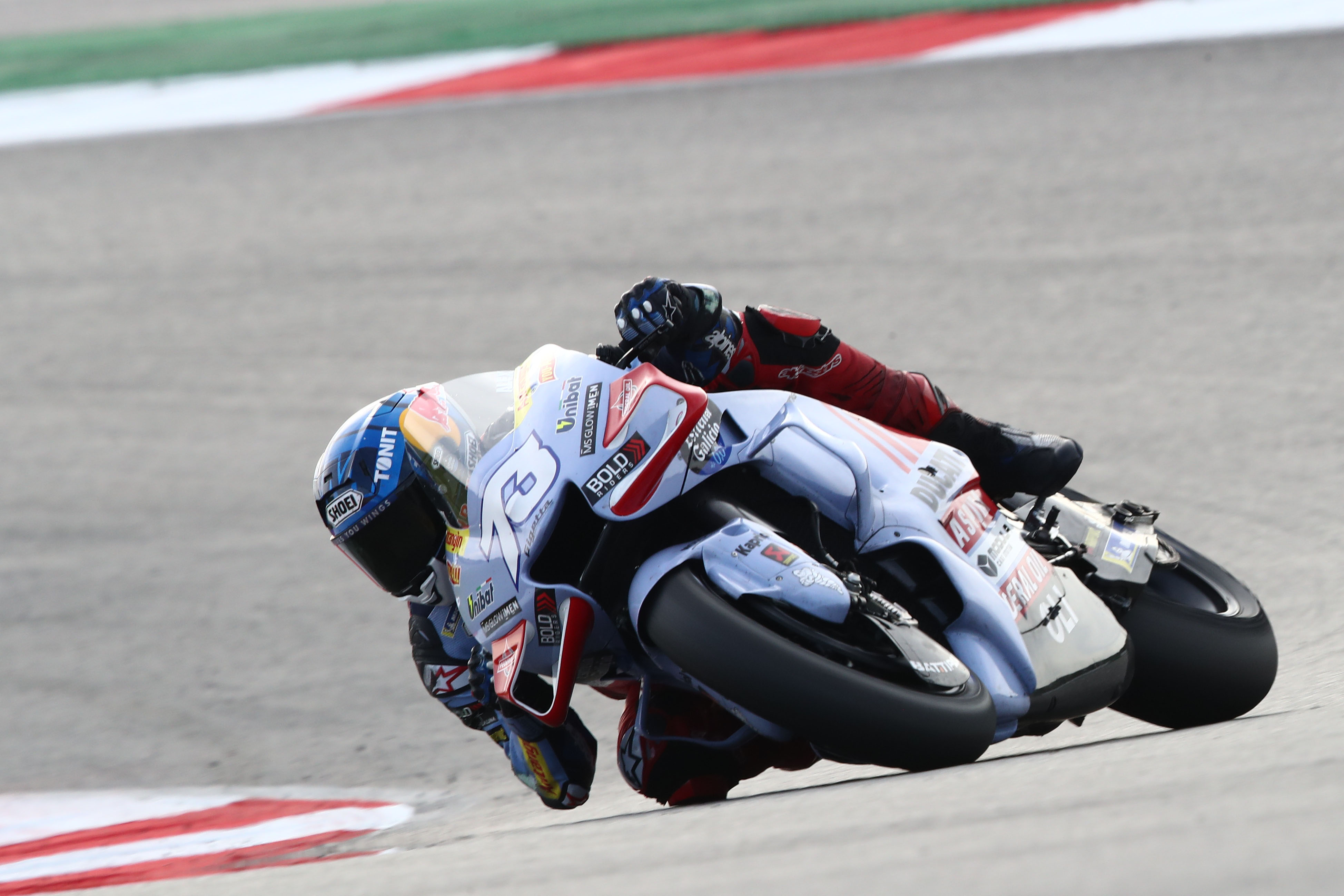
Run 1 (Sunday)
Average: 1m39.184s
Correlation: +0.8
Standard deviation: 0.3
Lap count: 11
Anyone who’s paid attention to Alex Marquez in MotoGP will have seen the lap that left him seventh in the test and said ‘oh, he must’ve been even better in long runs’. And, wouldn’t you know it…
“New soft rear, and I was trying to push maximum from the beginning to see how the rear tyre was going down,” was his explanation. “Not bad – I think I pushed a little bit too much the rear tyre on the beginning but was something planned.
“On paper, we are ready to fight for a top five. More than this – we are not ready for a victory, we are, I think, not ready for a podium, but for a top five, yes. Fighting, to be there. But in a GP everything is different, with the Dunlop tyre [chunks from Moto2/Moto3] on the track can change a lot.”
The other-year-old satellite Ducatis – the VR46 pairing of Luca Marini and Marco Bezzecchi – were also there or thereabout, and Gresini team-mate Fabio Di Giannantonio would’ve shown something if he weren’t sidelined for the day – but Marquez, who may be something of a Portimao specialist, was particularly impressive.
Enea Bastianini (Ducati)
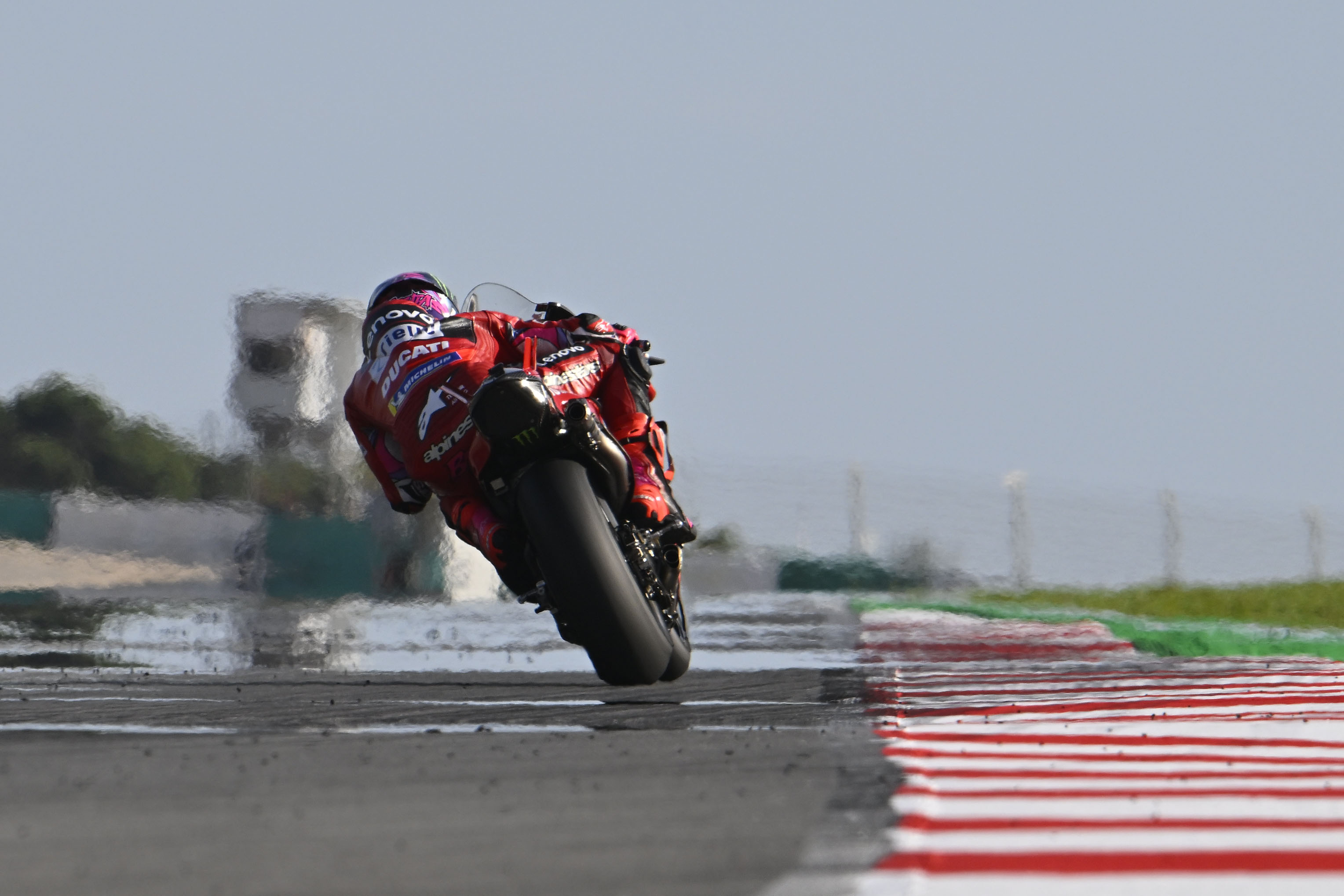
Run 1 (Sunday)
Average: 1m39.192s
Correlation: +0.8
Standard deviation: 0.2
Lap count: 12
Bagnaia described new team-mate Bastianini’s run as quite competitive given the context of the latter’s issues in Portimao – a Saturday compromised by technical issues and a crash.
But while Bastianini clearly has more work to do with the GP23 compared to Bagnaia, you don’t have to squint very hard at all to see the signs of the rider who terrified MotoGP rivals with his late-race pace last year.
Maybe don’t tip him for a sprint win, but definitely don’t rule him out on Sunday.
Raul Fernandez (RNF Aprilia)
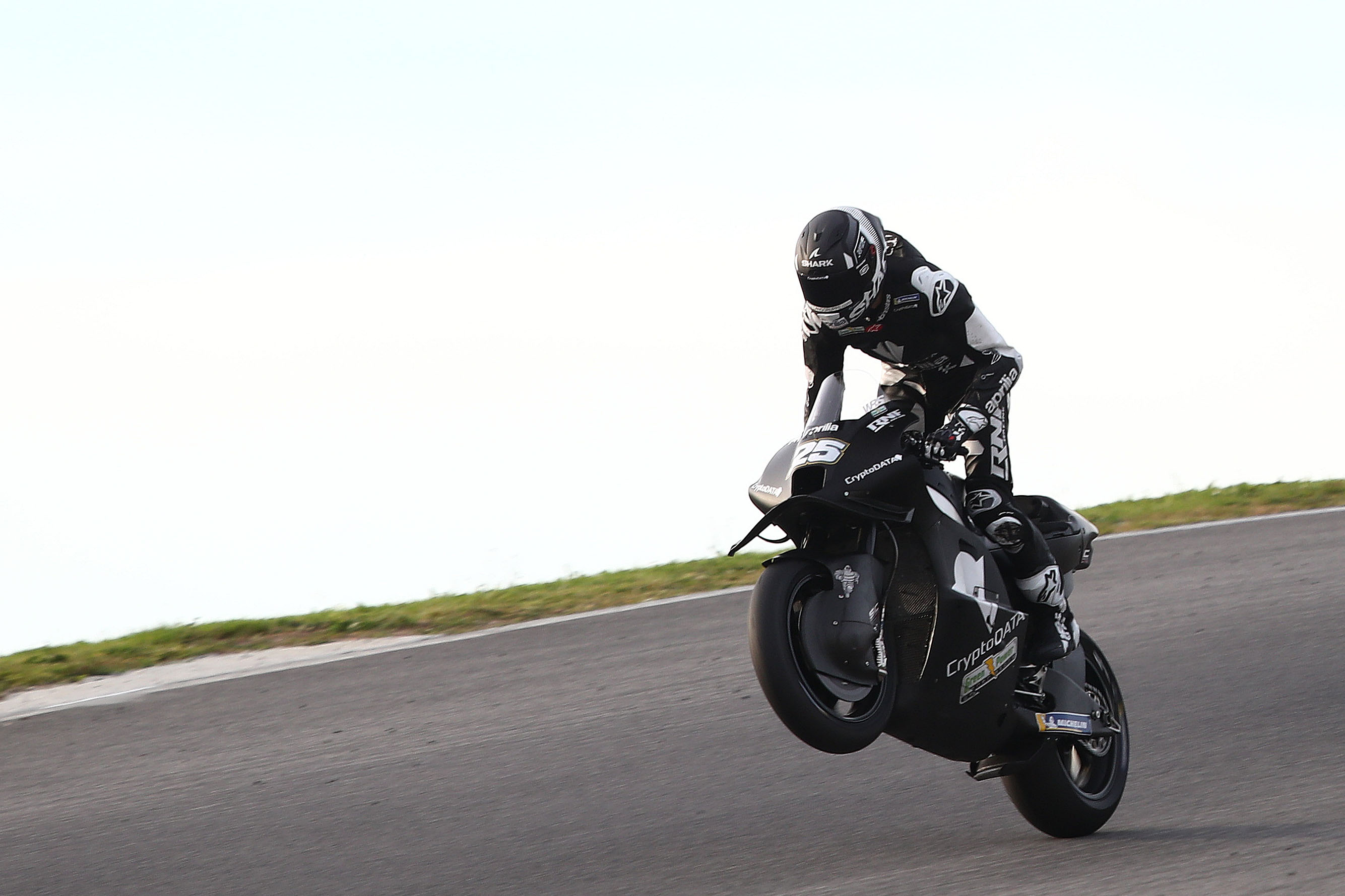
Run 1 (Sunday)
Average: 1m39.365s
Correlation: +0.7
Standard deviation: 0.3
Lap count: 8
“We did a small simulation of the sprint race, and I’m really happy. I did the [best] time on the race simulation – [then] I crashed when I tried to do the time attack.”
On sheer laptime, it was Fernandez who did the best race run of the Aprilia riders, and quite comfortably, too. And, like the rest of Fernandez’s off-season, it was a thoroughly encouraging run (albeit with a strong hint of tyre drop-off).
RNF team-mate Miguel Oliveira was a couple of tenths off on a longer run that crucially came with heavier fuel, as a simulation of the first laps of the GP rather than a sprint.
At the same time, we didn’t see much from the factory Aprilias on Sunday, Aleix Espargaro was hampered by a fibrosis and Maverick Vinales had some sort of unspecified technical issue.
But Vinales did pump in a run with a 1m39.6s average on Saturday and revealed that he ran a couple of laps in ‘sprint mode’ on Sunday once the issue was figured out, logging 1m38s-high laps much like Fernandez.
Marc Marquez (Honda)
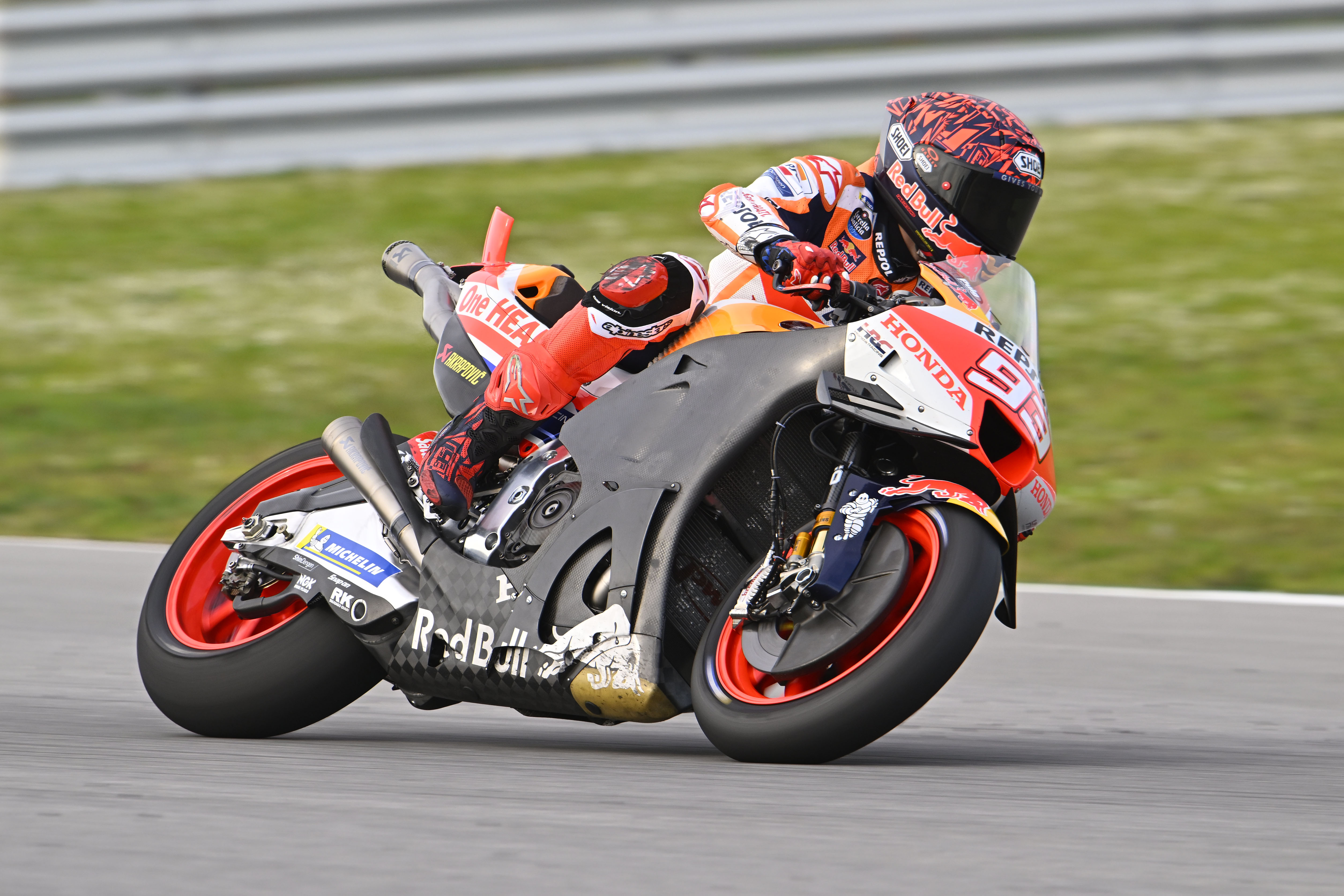
Run 1 (Sunday)
Average: 1m39.420s
Correlation: -0.2
Standard deviation: 0.2
Lap count: 11
There’s maybe a case for taking out the first lap of Marquez’s run – three tenths lost in the second sector – but even then it doesn’t improve the average that much.
“Of course today on the long run I pushed. My main target was the long run – 12 laps in a row was one of the main things, even to understand my physical condition, to keep training, because it’s another part of your training. On that long run, I was in a good rhythm.
“But now, for Portimao, we cannot think about the podium, we cannot think about victory. The conditions will change [for the GP weekend], rubber on the track, we will see – but at the moment, if tomorrow was the race with those conditions on the track, we can fight from fifth to 10th, I believe.”
Alex Rins (LCR Honda)
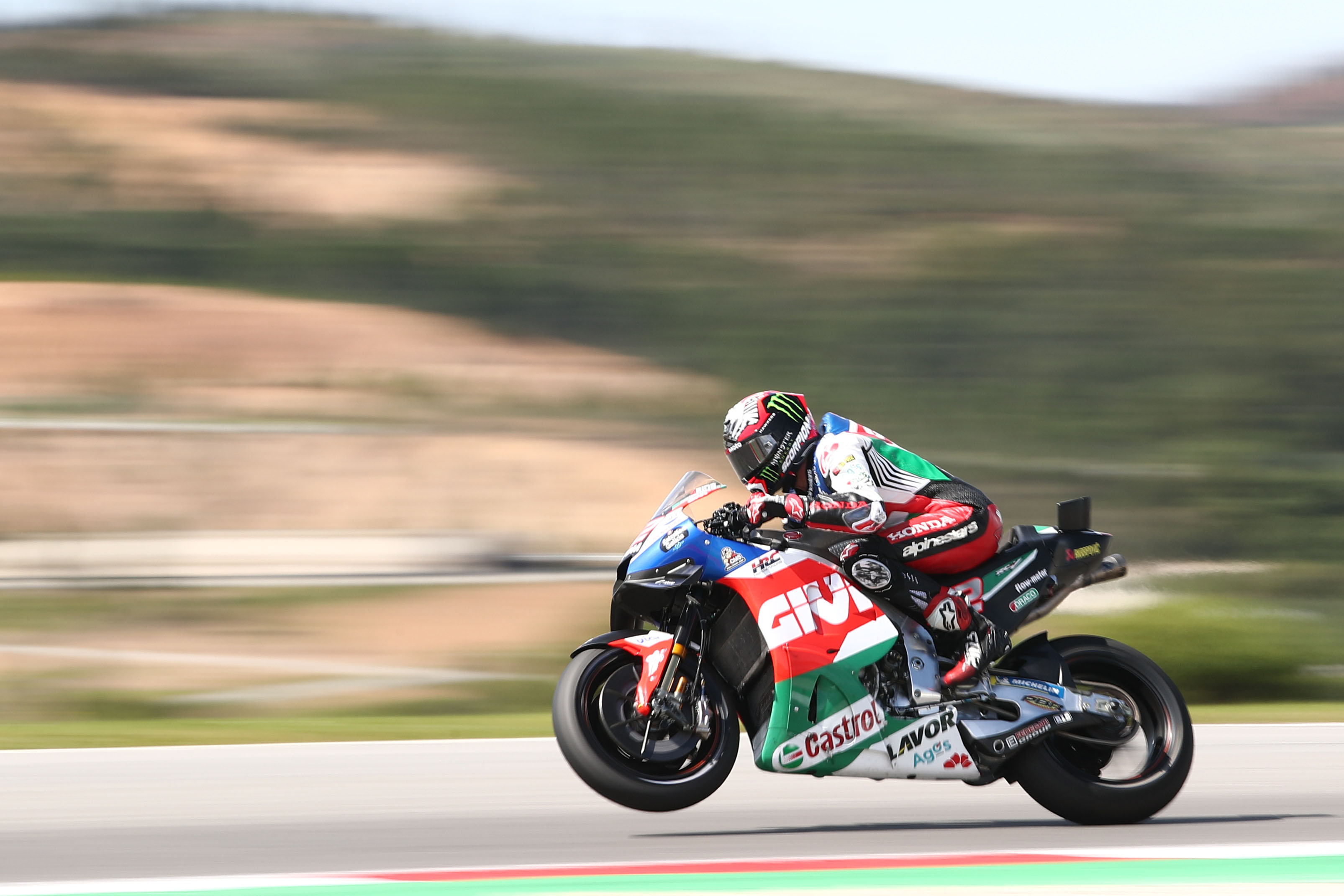
Run 1 (Sunday)
Average: 1m39.560s
Correlation: -0.6
Standard deviation: 0.3
Lap count: 12
At Sepang, Rins did a sprint simulation at the same time as VR46 Ducati rider Luca Marini and was shipping around half a second per lap.
He was closer to Marini here, but “still far” from the very top – “0.4s, 0.5s” in his estimate. It came with the belief that “on race pace, I’m a bit faster” than the other Hondas, though that may well have been corrected when he saw the Marquez run.
Fellow Suzuki-to-Honda convert Joan Mir did a slower run but with an important caveat. “I made nine laps in a row but with a used tyre, not with a proper one. I think I was able to keep the 39-highs, and with the new tyre, the laptimes is 39-low. So… we are not that far! Come on, I have to be optimistic.”
And there was a pretty encouraging run for the other LCR of Takaaki Nakagami – but only encouraging in the context of how rough his test had been otherwise.
Brad Binder (KTM)
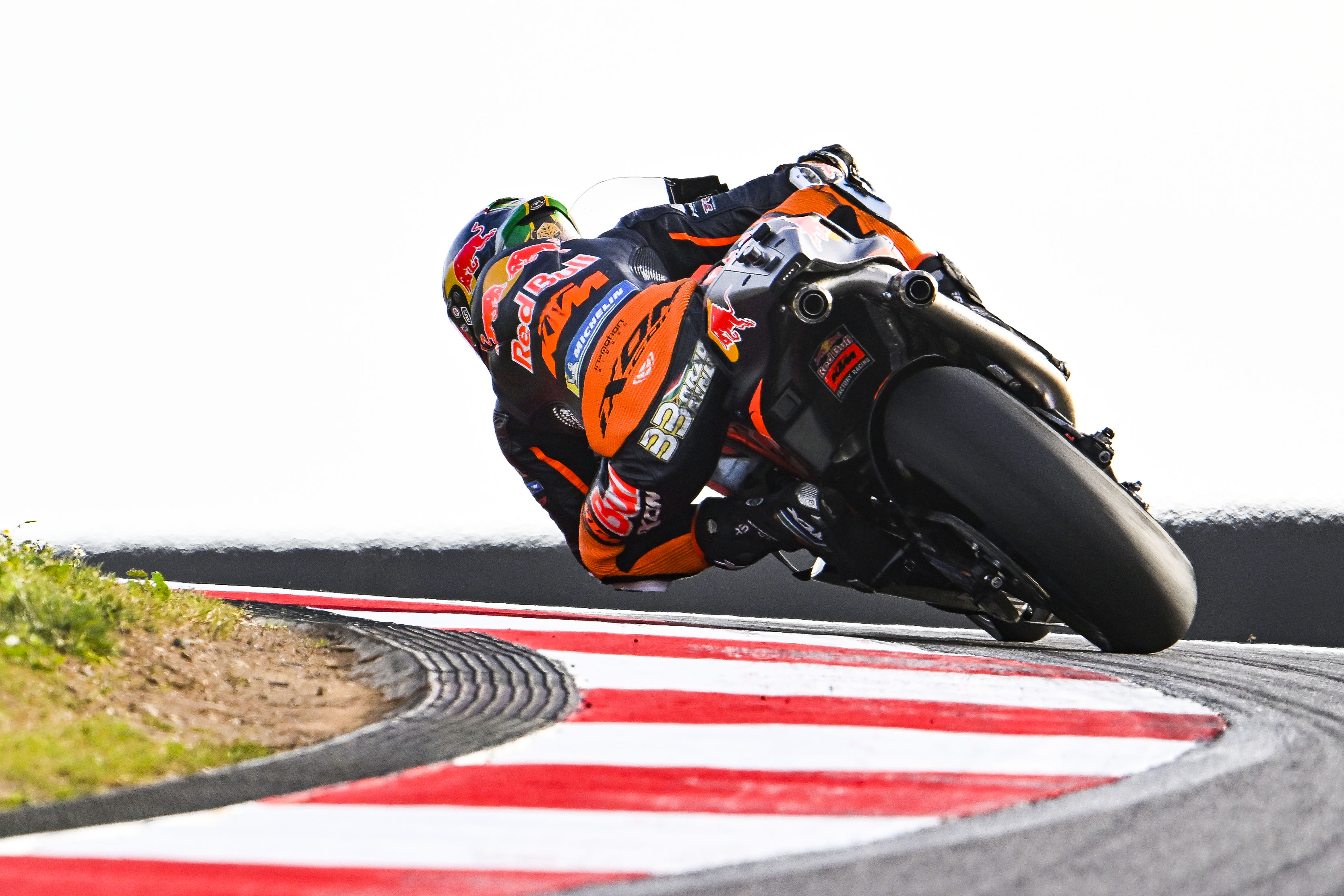
Run 2 (Sunday)
Average: 1m39.953s
Correlation: -0.7
Standard deviation: 0.2
Lap count: 11
Run 1 (Saturday)
Average: 1m40.567s
Correlation: +0.7
Standard deviation: 0.3
Lap count: 10
Binder did a major single-lap step – important, as it is a big area of focus for KTM – between day one and day two, but that was not really evident in the long run that came immediately before.
The laptime trend suggests medium tyre, and it’s hard to say whether it was sparkling fresh. Even so, there’s a deficit that’s just hard to understand.
“I did a little sprint race kind of thing, just to try my bearings for the first sprint race of the year. And yeah, for sure for me it was clear we weren’t quite at the level I want to be over those 12 laps. It gives us a time to really go sit down, analyse everybody that also did one, and see what the right choices are for next week.”
Augusto Fernandez (Gas Gas)
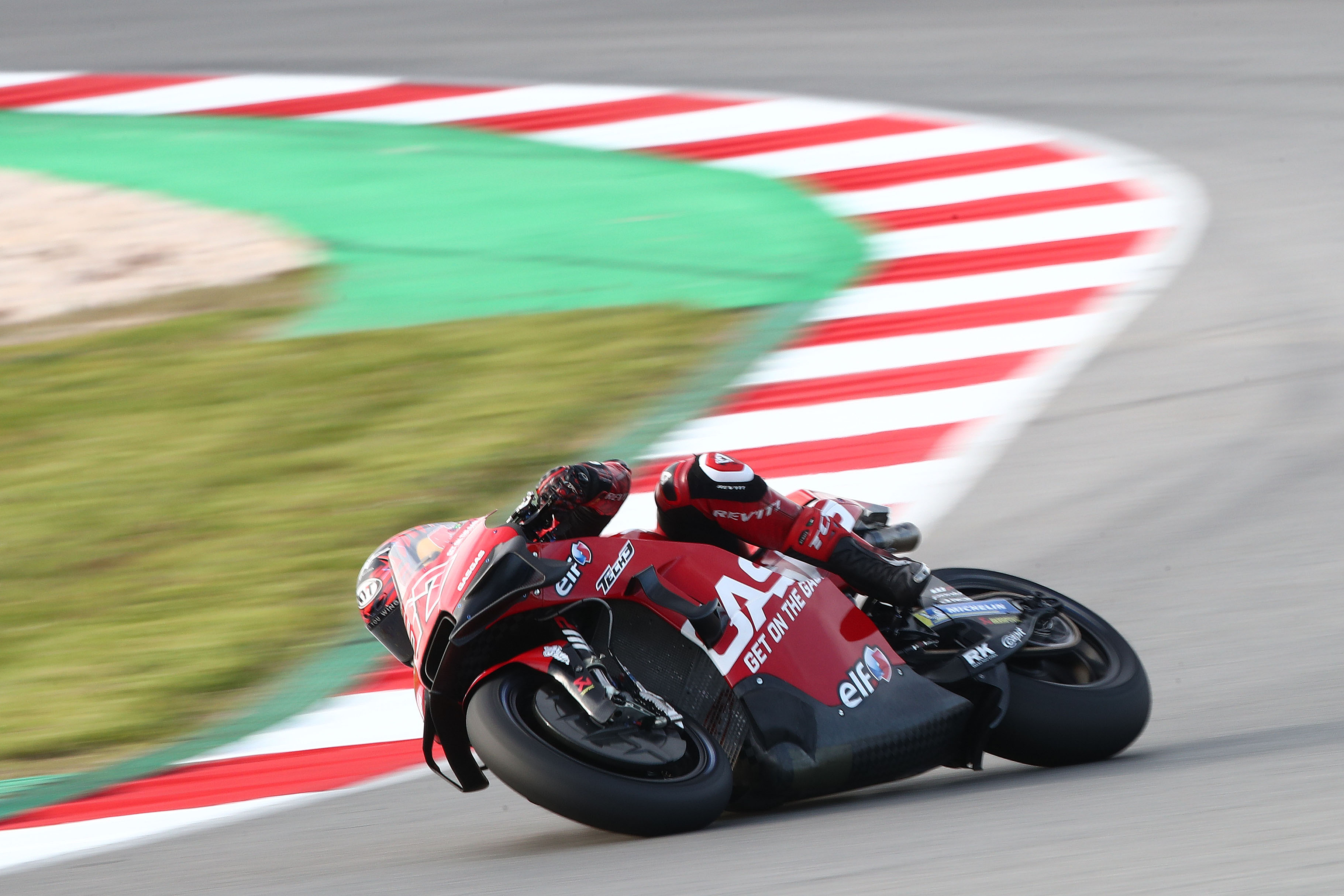
Run 1 (Sunday)
Average: 1m40.580s
Correlation: -0.7
Standard deviation: 0.5
Lap count: 18
The only proper, no-mistaking-it-for-anything-else Sunday race simulation came from the sole rookie in the field, and the average laptime obviously makes it clear he has work to do.
But here’s the kicker – his fastest laptime, not just of the run but of the whole test! – was the final lap of the simulation, on a properly worn medium rear.
That’s revealing both in terms of the general Portimao tyre wear but also obviously in Fernandez’s case. It is not exactly novel for a rookie, especially a KTM (Gas Gas) rookie, to find it difficult to extract time from rubber at the peak grip level, but ending the run with a 1m39.667s (nine tenths better than the average) is clearly a good sign.
Long run leaderboard
| Rider | Team | Average | Laps | Day |
| Pecco Bagnaia | Ducati | 1m38.994s | 11 | Sun |
| Jorge Martin | Pramac Ducati | 1m39.094s | 11 | Sun |
| Fabio Quartararo | Yamaha | 1m39.126s | 11 | Sun |
| Alex Marquez | Gresini Ducati | 1m39.184s | 11 | Sun |
| Enea Bastianini | Ducati | 1m39.192s | 12 | Sun |
| Marco Bezzecchi | VR46 Ducati | 1m39.305s | 12 | Sun |
| Luca Marini | VR46 Ducati | 1m39.330s | 11 | Sun |
| Raul Fernandez | RNF Aprilia | 1m39.365s | 8 | Sun |
| Johann Zarco | Pramac Ducati | 1m39.414s | 7 | Sun |
| Marc Marquez | Honda | 1m39.420s | 11 | Sun |
| Pecco Bagnaia | Ducati | 1m39.440s | 10 | Sun |
| Miguel Oliveira | RNF Aprilia | 1m39.536s | 12 | Sun |
| Alex Rins | LCR Honda | 1m39.560s | 12 | Sun |
| Maverick Vinales | Aprilia | 1m39.609s | 10 | Sat |
| Aleix Espargaro | Aprilia | 1m39.684s | 7 | Sun |
| Takaaki Nakagami | LCR Honda | 1m39.687s | 10 | Sun |
| Luca Marini | VR46 Ducati | 1m39.697s | 8 | Sun |
| Brad Binder | KTM | 1m39.953s | 11 | Sun |
| Miguel Oliveira | RNF Aprilia | 1m39.975s | 8 | Sat |
| Maverick Vinales | Aprilia | 1m40.064s | 15 | Sun |
| Fabio Di Giannantonio | Gresini Ducati | 1m40.335s | 8 | Sat |
| Johann Zarco | Pramac Ducati | 1m40.428s | 7 | Sat |
| Brad Binder | KTM | 1m40.567s | 10 | Sat |
| Augusto Fernandez | Gas Gas | 1m40.580s | 18 | Sun |










